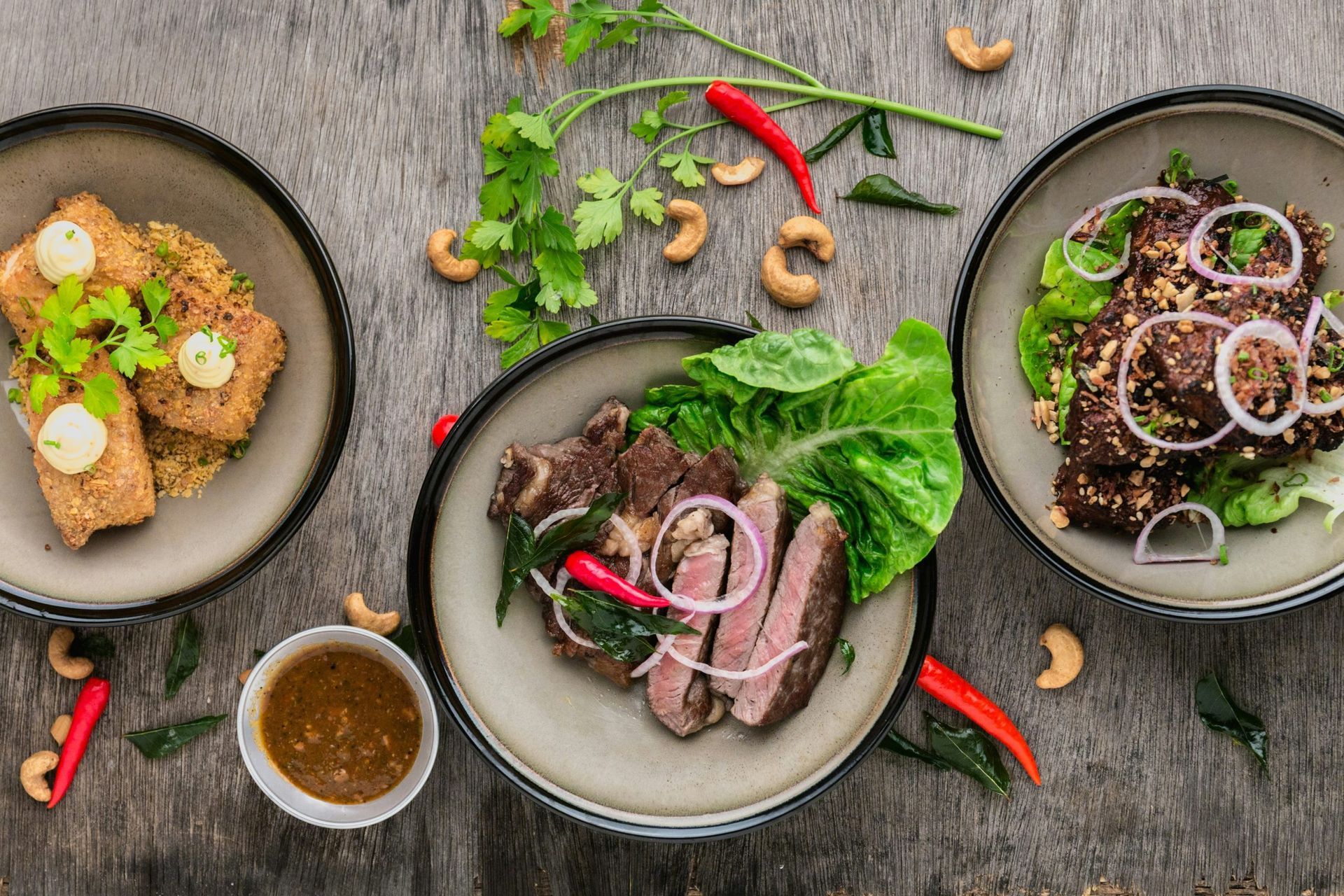Dish each of your meals up using the “Fist/Palm/Thumb Rule” (see explanation below) and then do one of the following:
You can eat all the right foods at the right times, but if you’re eating too much, it’s going to be tough to lose fat. So, I want you to work on the following strategy to ensure that you have the right portions at each meal.
1. IF YOU START TO FEEL FULL before you’ve finished all the food on your plate, simply put your fork down and save the rest for later.
Never feel like you have to finish everything on your plate. The Fist/Palm/Thumb Rule is an excellent guide of how much to dish up, but ultimately, you should pay attention to your internal signs of hunger and fullness to know when to stop eating. That is, let your body be your guide for when and how much to eat.
2. IF YOU’VE EATEN EVERYTHING ON YOUR PLATE AND DON’T YET FEEL FULL , before you go back for more, wait 15 minutes and have a large glass of water. It often takes your brain 15 minutes or so to catch up with your stomach and you’ll often find that you weren’t really still hungry after all.
If you choose the right foods (a natural carb with a protein and healthy fat) and then listen to your body and stop eating when full, you simply cannot fail.
Now, here’s a little more on the “Fist/Palm/Thumb Rule” … because counting, calculating, and measuring your food is way too complicated and time-consuming. Figuring out your meal portions really doesn’t need to be that difficult! Here’s a much easier way:
Here’s how to select the right portion of each food type, specifically for YOU:
Carbs (Starchy, Simple, and Fibrous)
The carb that you choose for each meal should be approximately the size of your fist. For example, the average woman has a fist about the size of a small baked potato. Note: Some meals suggest more than one type of carb.
For example, at meal 2 you might have half of a baked potato (starchy carb) and half an apple (simple carb), so that the size of your total portion of carbs (starchy + simple) is about the size of your fist.

Protein
Your choice of protein should be approximately the size of your palm. For example, a medium-sized chicken breast.
Fat
The fat source you choose should be about the size of your thumb. This is about 5 almonds for the averaged-sized woman or 7 almonds for the average man.
Using the Fist/Palm/Thumb Rule to dish up your portions and then listening to your body as your guide for when to put your fork down or go back for more (after waiting 15 minutes).
A Handy Guide to Estimating Portion Sizes By Hand (as a rule of thumb)
Understanding portion sizes is crucial for balanced eating, and your hands offer a surprisingly effective and always-available measuring tool or better known as the Fist/Palm/Thumb Rule. This guide simplifies portion control, eliminating the need for scales or measuring cups.
Fist = 1 Cup
Your closed fist serves as a handy guide for carbohydrate portions. It’s perfect for gauging servings of rice, cereals, salads, fruits, and even popcorn. When in doubt, compare the volume of these foods to the size of your clenched fist.
Palm = 3 Oz.
The size of your palm, excluding fingers, is a practical measure for protein intake. This area roughly equals a 3-ounce serving, ideal for estimating portions of meats like pork, poultry, beef, fish, and chicken.
Tip of Thumb = 1 Tablespoon
Use the tip of your thumb (up to the first joint) to judge servings of fats. This measurement is great for portioning out spreads and dressings such as mayonnaise, cream cheese, salad dressings, creams, and peanut butter.
Thumb Nail = 1 Teaspoon
The size of your thumb nail approximates a teaspoon, useful for measuring smaller amounts of oils and fats. Apply this for dressings like olive oil or butter, ensuring you’re not overdoing these calorie-dense ingredients.
Cupped Hand = 1/2 Cup
When you cup your hand, it forms a bowl-like shape that’s approximately half a cup in volume. This is especially helpful for portioning foods like pasta, potatoes, nuts, and even treats like ice cream.
Remember, these are guidelines to help you make healthier choices without fuss, but does help you when estimating portion sizes using your hands. Listen to your body’s hunger cues and adjust portions to your personal needs and fullness signals.
FAQ’s
- How Accurate is the Fist/Palm/Thumb Rule for Portion Control?
This question can delve into the general accuracy of using hand sizes for estimating portion sizes, discussing its effectiveness as a guideline compared to more precise measurement methods. - Can the Fist/Palm/Thumb Rule be Adapted for Different Dietary Needs?
Here, you can explore how this rule can be adjusted for various dietary requirements, such as for athletes requiring higher protein intake, or for those on specific diets like vegan, ketogenic, or low-carb. - How Should I Apply the Fist/Palm/Thumb Rule When Eating Out?
This question is relevant for readers who dine out frequently and want to maintain portion control. It can provide tips on how to visually estimate portion sizes in restaurants or when ordering takeaway. - Is the Fist/Palm/Thumb Rule Suitable for Children and Teenagers?
Address how the rule can be used for younger individuals, considering their different nutritional needs and growing bodies. - How Do I Balance Meals Using the Fist/Palm/Thumb Rule?
This could involve guidance on how to use the rule to create well-balanced meals, ensuring an appropriate mix of carbohydrates, proteins, and fats for overall nutritional balance.
LATEST POSTS






